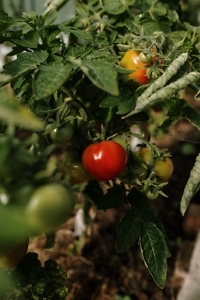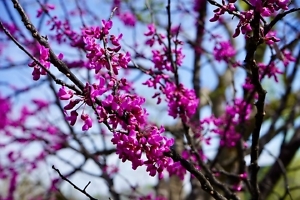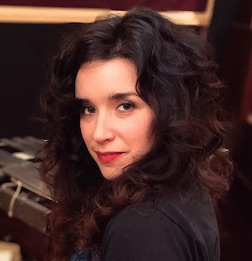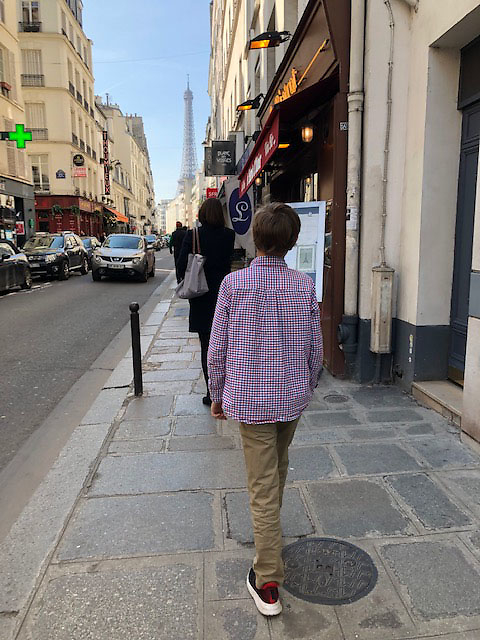Southernified
The pleasures of patience, redbuds, and good neighbors
Every so often, my neighbor Horton will send me a text message. They go something like, “I dug up some shallots this morning. I have them layin out sunnin” or “Would you like some spinach? I’ve washed it, but it may need some more checkin.” It’s the purest form of Southern hospitality from a born and bred, overall-wearing Tennessean and I can’t believe how lucky I am to have him as a neighbor. Sometimes I wonder why anyone would want to live anywhere but the South and whether I’ve discovered some secret to life since moving here. I mean, who could refuse a friendly offering of fresh, foraged vegetables? Certainly not me. But having moved here from Brooklyn, I can honestly imagine someone in my former building on Ocean Parkway scoffing at the gesture, shooing me away, while yelling, “I have my own vegetables, why would I need yours?!”

I’ve lived in Nashville for a little more than seven years and came here for many reasons. I suspect a lot of people at home think I’m crazy for moving here, but for me I feel like I’ve found a new home. It may go without saying, but New Englanders and New Yorkers are known to be a rude, judgmental, cold, and overly honest people. Maybe it’s because of the snow or not really trusting their neighbors, but I do believe the majority of them associate the South with a lot of terrible stereotypes, fearful of what they don’t know — like that people down here are all a bunch of snake wrangling, speaking in tongues, crazy Christians, uneducated Billy Bob Whatshisnames, who are unhealthy, lard-loving Paula Deen fans. These are obviously rude conflations and misrepresentations of an entire region of the country, and having lived here myself, when I think of South, something more nuanced comes to mind.
When you’ve had your car’s AC break in the middle of a god-awful June heatwave while driving on the sizzling tar of I-40 East, simultaneously listening to bluegrass and barely able to breathe the humid air, some Southern badge of honor feels warranted. Or when your auto mechanic used to be Taylor Swift’s drummer but is really a western swing jazz head and can’t stop talking about Buddy Emmons. Or finally, when you arrive home to see a blazing orange sunset, and the temperature drop feels “cold” at 64 degrees, you know something’s literally changed in your now Southernified blood.
I have also seen my patience grow exponentially. Especially when standing and waiting in any sort of line. There’s a different sense of time here, people aren’t in a rush and they savor moments when they’re talking to you. Of course, sometimes, this means the speedy checkout I recall in the bodegas of Brooklyn will take a minute or two longer at the local Piggly Wiggly, but I don’t mind because somehow I’m not really in a rush anymore.
This slower rhythm has also taken a deeper hold within my life, and is something I am still learning to trust. I moved here with intentions of performing, making records, and becoming a part of a musical community, and after four years or so, I saw some hopes come to fruition. I had meetings with major indie labels, a brand new album to release and a monthly residency at a local East Nashville rock club. I had been climbing the ladder up to the sky of my wildest dreams, sacrificing every vacation day I had to go on tour, not seeing friends or family for years, hyper-focused on gaining recognition for my music and art. But the pandemic shut down live shows and this partnered with the limits of being a self-funded independent artist, stalled any momentum I had going for my career.
I grieved my losses for many months at the start of The Great Unprecedented Time, sinking into a depression that wouldn’t let me get up off the couch. All the work and sacrifice I had made felt erased. My identity felt mushed and confused. If I didn’t have music to channel myself, my worth into, then who was I? I meditated, listened to podcasts on therapeutic approaches to handling loss, I even live-streamed playing shows and hated it. I tried to soldier on, holding my heart ever-so-gently and just when I thought I had come to a sort of Buddhist understanding and acceptance of the constant groundlessness of life, I’d end up back on the couch, crying.
At some point I reconciled that I had no real control of my circumstances and started to turn toward the things I did have control of. These became my tools for healing, creative practices to build upon that grew more and more important to me day by day, month by month. I sought more tenderness and reciprocity with my friendships, having always struggled with being the listener and not the listened to. I honed my focus on the craft of songwriting, studying the classic chord structures of Carole King, John Lennon, and Stevie Wonder. I took virtual piano lessons, finally fulfilling a lifelong desire to play the gospel style licks that I had watched growing up in a church filled with world class musicians. I hiked the jungle-like forests of the Upper Cumberland, holding tiny snail shells in the palm of my hand while learning that Tennessee was once under water some 3 million years ago. Months into it all I stood outside admiring the springtime pop of lush kelly green all around me and heard Horton say, “Guess we’re all going to learn to enjoy life’s simple pleasures now.” Turns out Horton was on the money.
Horton must be in his 80s and has lived in this historic little neighborhood outside Nashville, in the same house next door, for over 60 years. All of the homes in the Village are Sears homes, built from 1918-1925 by the Dupont plant for their workers, which is now a surgical gauze production plant down the road. The house we live in looks like a little kid drew it up: perfect rectangular shape with a triangular roof, front door on the left, window on the right, two equidistant windows on the second floor and of course, a front porch. The design is called the Haskell House and there must be several dozen of them, of the exact same structure and layout throughout our neighborhood, all different colors, some covered in vinyl, some still standing with their original shingles.
Horton lives in the second most common design in the Village, the Georgian, and his house is covered in aluminum siding, which was added in the 50’s, he told me. He is a retired band teacher who now spends most of his time going to train shows all across the state, visiting his new grandchildren, or lucky for me, growing an array of vegetables, peonies, sage, mint, rosemary, marjoram and sweet teardrop figs in his backyard. During the second year of the pandemic, I decided to try growing a vegetable garden of my own. I planted tomatoes of the beefsteak and cherry variety, broccoli, kale, cabbage and an abhorrent amount of beets. I honestly wasn’t sure how many would take, so I dumped the whole sack of seeds in a row, and all of them sprouted. Some plants I didn’t tend to as well as I should and were eaten up by beetles and tiny black specks. Others would go wild and no matter how much I harvested, I couldn’t keep up. After cutting and eating as much broccoli and beets as I could stomach, the plants started growing strange, gangly stalks. The lettuce did this too, morphing into a new psychedelic version of itself, with tall, bitter, kaleidoscopic offspring.
At some point, I became spoiled by Horton’s vegetables and my other neighbors’ overgrown herb garden, and gave up on my own. Disappointed by my lack of edible bounty, I decided to focus what energy I had left on growing flowers.
I started a large, bushy wildflower garden, planting zinnia and cosmos seeds in two beds out front. I watered them daily, posted my progress online, pruned their young stalks to encourage double blooms and when time came for them to inhabit their full flower selves, I was overcome by their multifarious, juicy shades of orange, red and pink. They were all sun worshippers in my flaring front yard, and I found that as long as they had some fertilizer, a solar connection with their God and a good watering every couple days, they would explode in size and color.

At some point, feeling proud of my green thumb, I surveyed my front yard for the perfect spot to plant my first tree. Of course, there’s so much significance in planting and growing your first tree. You’re planting a green living thing that will live a long time, beautify and give back to the landscape while giving you and your neighbors oxygen for which you can’t live without. But really aren’t you planting hope for the future? Hope that it will one day grow old and be a part of a history you started, akin to the living and length of your own life?
After a little research, I decided on a flowering tree, indigenous to Eastern North America called the redbud. I’d become familiar with this April bloomer, known for producing its tiny pink, globular flowers all up and down its branches and they always brought a smile to my face as a signifier of spring’s arrival to Middle Tennessee.
Luckily I had discovered the Nashville Tree Foundation, who would give away hundreds of free young trees several times a year. Their goal was to restore the canopy that had been decimated by tornados and all the deforestation that occurs due to massive population growth. I stood in line behind a coffee shop on Lebanon Pike, picked out my skinny, teenager of a tree and somehow shimmied it in the back of my Honda Accord, up through an access door through the back middle seat. I drove home smiling, leaves obstructing my rearview mirror, brimming with anticipation of those tiny pink blooms. I planted it the same day, right out front in a sunny spot.
I’d had my redbud planted for a few months, when I noticed that the spade shaped leaves had turned yellowy. Upon closer inspection I noticed all the branches looked gray and brittle. Unbeknownst to me, those parts were dead, which I didn’t realize until I asked Horton to give it a look one day.
“You got some pinchers?” He asked. “I’d try cutting those there off and see if that helps.”
Once again I wanted to give up and move on to another project. Everything felt so universally heavy and I didn’t understand how I had neglected some part of my small baby tree. Even worse, it looked like the disease had infected the wood located in the longest and thickest branch, the one with the most growth since planting. After so much time and care, I’d need to cut it off and hope that it would nurse itself back to health. In the days after the branch removal, I started daily watering and going outside in the mornings to whisper words of encouragement into its leaves. You’re gonna be okay, little redbud.
Within months after my pruning lesson and in the early spring of March, I started to notice itsy-bitsy greenish buds sprout along the trunk. Within weeks these buds extended into branches which have now grown into young limbs, and almost a year later this redbud sprouted the bushiest, greenest leaves I’ve ever seen. I was shocked.
One morning, clipping some delicate cosmos flowers from the front beds to bring inside, I stared, beholding the natural, neon orange petals in my grip. Had being a Southerner taught me the pleasures of patience? How could something so gorgeous grow out of the dirt, take its time and now bloom repeatedly for months? I stood there lost in my bewilderment of this small beauty, when Horton slowed his car in front of my house, rolled his window down and shouted, “Look at that tree! It’s doing a lot better.” “I know!” I beamed. I turned around and looked at my little redbud. I couldn’t believe how much it was flourishing, and couldn’t believe how quickly I wanted to give it up and cut my losses many months ago. I looked closer and noticed it had even grown a branch that was thicker than the one that was lost and was now billowing out wider and taller than me.

Copyright © 2023 by Nellen Dryden. All rights reserved. Nellen Dryden is a songwriter, singer, musician, and writer living in Middle Tennessee. Her album, Standstill, was featured on NPR and as one of the best new releases of 2021 by Songpickr. Find more from her at www.nellendryden.com.

